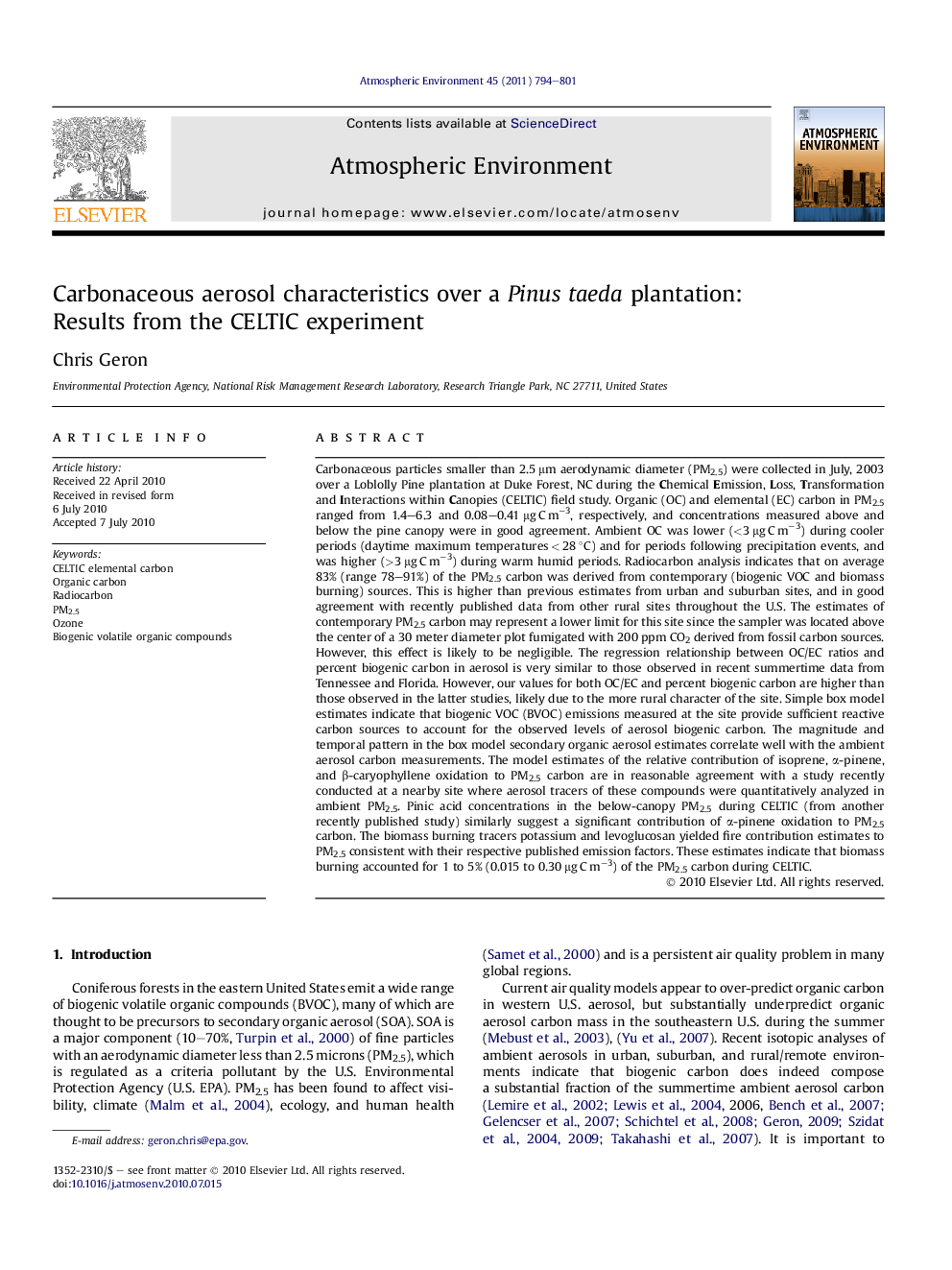| کد مقاله | کد نشریه | سال انتشار | مقاله انگلیسی | نسخه تمام متن |
|---|---|---|---|---|
| 4440224 | 1311051 | 2011 | 8 صفحه PDF | دانلود رایگان |

Carbonaceous particles smaller than 2.5 μm aerodynamic diameter (PM2.5) were collected in July, 2003 over a Loblolly Pine plantation at Duke Forest, NC during the Chemical Emission, Loss, Transformation and Interactions within Canopies (CELTIC) field study. Organic (OC) and elemental (EC) carbon in PM2.5 ranged from 1.4–6.3 and 0.08–0.41 μg C m−3, respectively, and concentrations measured above and below the pine canopy were in good agreement. Ambient OC was lower (<3 μg C m−3) during cooler periods (daytime maximum temperatures < 28 °C) and for periods following precipitation events, and was higher (>3 μg C m−3) during warm humid periods. Radiocarbon analysis indicates that on average 83% (range 78–91%) of the PM2.5 carbon was derived from contemporary (biogenic VOC and biomass burning) sources. This is higher than previous estimates from urban and suburban sites, and in good agreement with recently published data from other rural sites throughout the U.S. The estimates of contemporary PM2.5 carbon may represent a lower limit for this site since the sampler was located above the center of a 30 meter diameter plot fumigated with 200 ppm CO2 derived from fossil carbon sources. However, this effect is likely to be negligible. The regression relationship between OC/EC ratios and percent biogenic carbon in aerosol is very similar to those observed in recent summertime data from Tennessee and Florida. However, our values for both OC/EC and percent biogenic carbon are higher than those observed in the latter studies, likely due to the more rural character of the site. Simple box model estimates indicate that biogenic VOC (BVOC) emissions measured at the site provide sufficient reactive carbon sources to account for the observed levels of aerosol biogenic carbon. The magnitude and temporal pattern in the box model secondary organic aerosol estimates correlate well with the ambient aerosol carbon measurements. The model estimates of the relative contribution of isoprene, α-pinene, and β-caryophyllene oxidation to PM2.5 carbon are in reasonable agreement with a study recently conducted at a nearby site where aerosol tracers of these compounds were quantitatively analyzed in ambient PM2.5. Pinic acid concentrations in the below-canopy PM2.5 during CELTIC (from another recently published study) similarly suggest a significant contribution of α-pinene oxidation to PM2.5 carbon. The biomass burning tracers potassium and levoglucosan yielded fire contribution estimates to PM2.5 consistent with their respective published emission factors. These estimates indicate that biomass burning accounted for 1 to 5% (0.015 to 0.30 μg C m−3) of the PM2.5 carbon during CELTIC.
Journal: Atmospheric Environment - Volume 45, Issue 3, January 2011, Pages 794–801